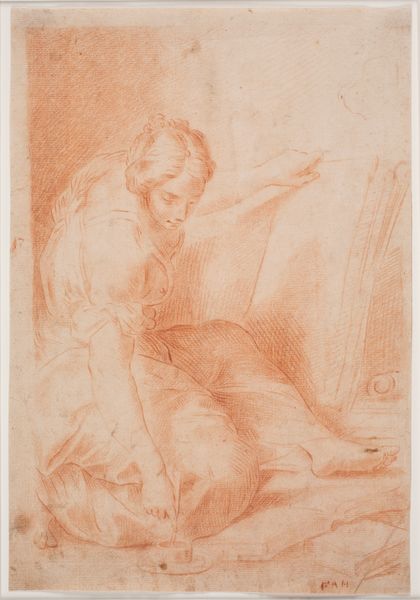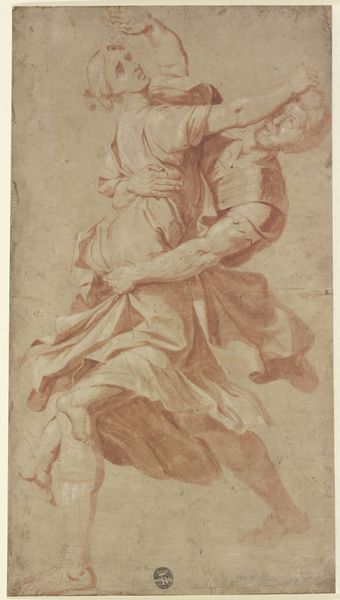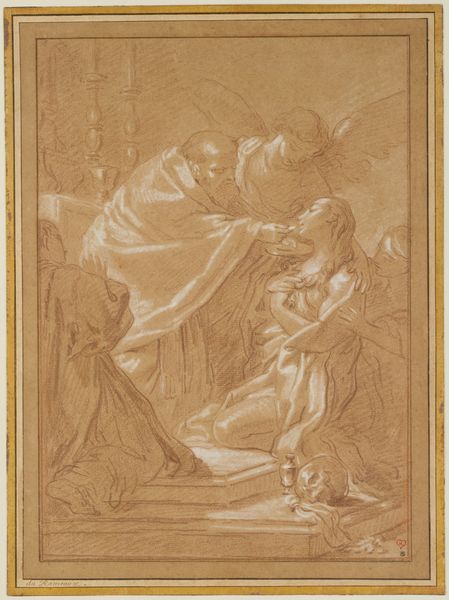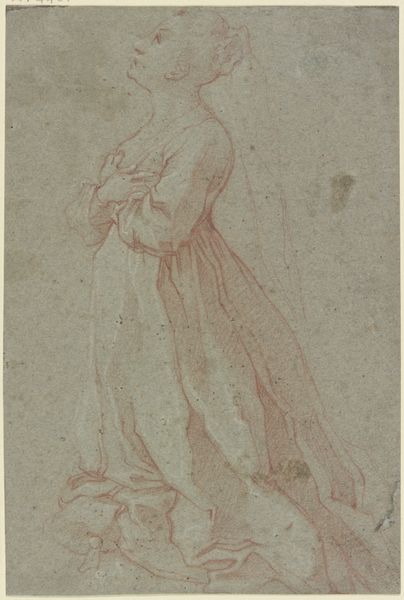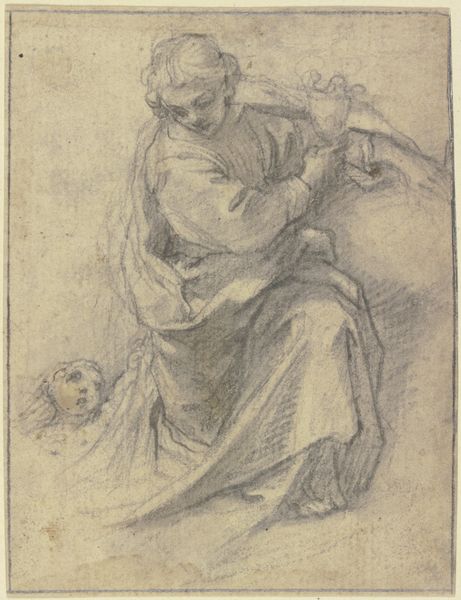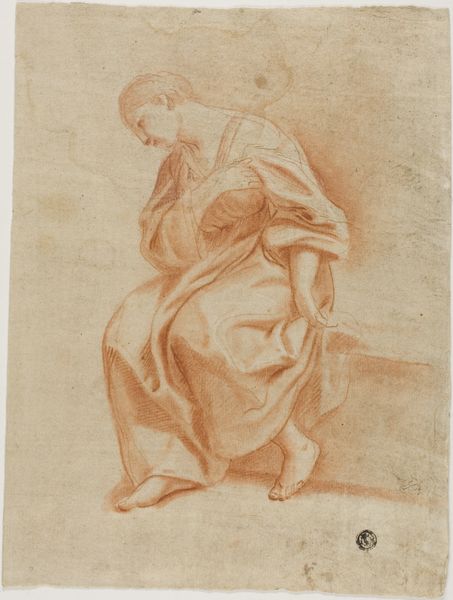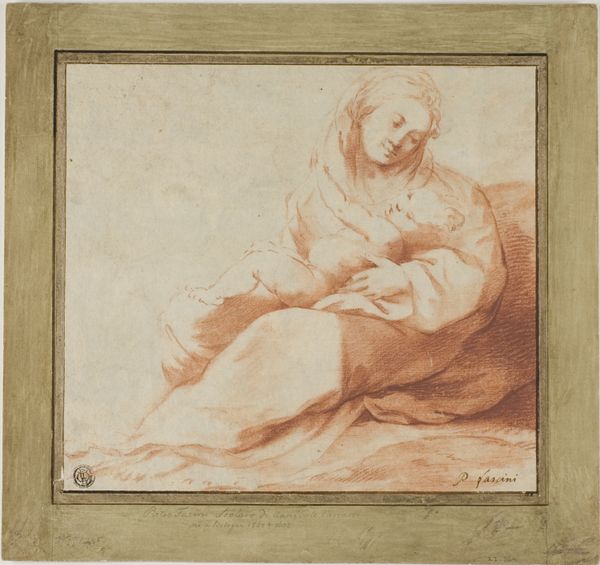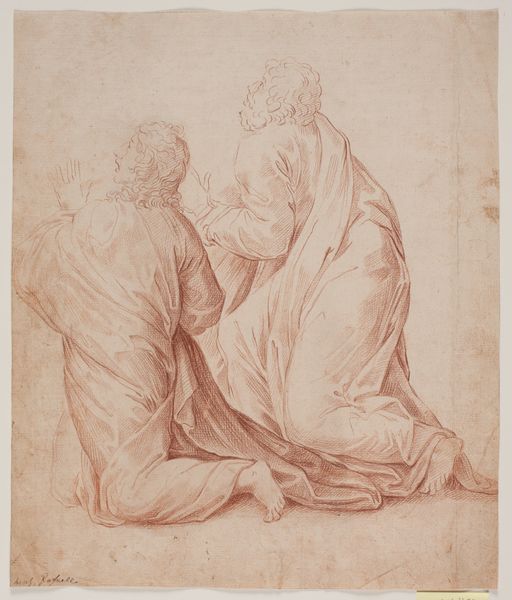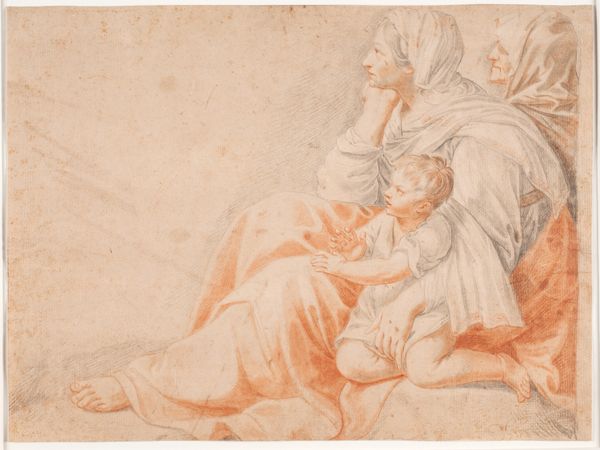
drawing, charcoal
#
portrait
#
drawing
#
baroque
#
charcoal drawing
#
figuration
#
charcoal
Dimensions: 11 7/16 x 9 9/16in. (29 x 24.3cm)
Copyright: Public Domain
Curator: Mattia Preti's "Kneeling Woman," likely created between 1600 and 1700, uses charcoal to render a figure study. Editor: My immediate impression is one of subdued drama. The figure's downward gaze and clasped hands speak of sorrow or contemplation. Curator: The medium, charcoal, is interesting here. Its relative affordability made it readily available in artists' workshops for studies, quite distinct from finished pieces intended for aristocratic patrons. We’re looking at the means of production. Editor: I see a profound vulnerability expressed through gesture. The kneeling posture, the slight bowing of the head—these have become enduring visual markers of penitence or supplication across cultures. The weight of religious iconography feels very present. Curator: Considering Preti's broader oeuvre and the historical context, we could see this as part of his workshop practice, possibly related to his larger commissions, like altarpieces for various churches. The labour involved is palpable in each stroke. Editor: Notice, too, the drapery. The folds and highlights seem to intentionally recall imagery of mourning saints or perhaps even classical figures in poses of grief. It links directly to an inherited vocabulary of pathos. Curator: Absolutely. The material itself, though humble charcoal, lends itself to rapid mark-making—reflecting an emphasis on process and studio production during the Baroque era. This connects to art's consumption. Editor: It resonates across centuries, doesn’t it? This convergence of simple charcoal and archetypal gestures still speaks to universal human emotions, drawing on that visual well we all share. Curator: Examining the production circumstances and accessible materials expands our comprehension beyond merely identifying the artwork's religious roots. Editor: And seeing the symbolic weight embedded in simple actions of posture and gesture reminds us of the continuing power of visual language.
Comments
No comments
Be the first to comment and join the conversation on the ultimate creative platform.
